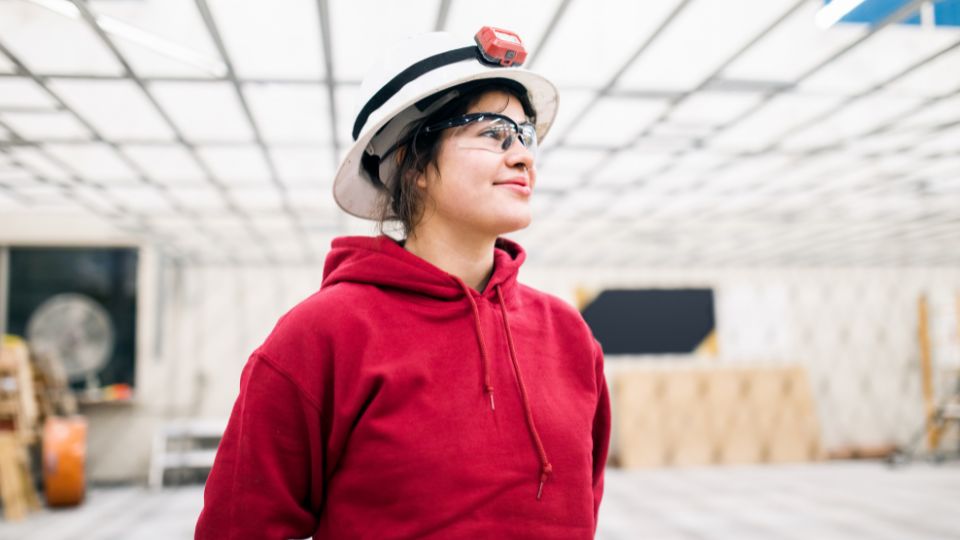The construction industry plays a key role in adapting to and mitigating the impacts of climate change in Alberta by building and updating our built environment. There is an urgent need to build, retrofit and maintain infrastructure. At the same time, the industry faces challenges in recruiting and retaining workers. Many young people are looking for careers that contribute to climate solutions, and if the industry focuses on reducing emissions from construction, it could attract and retain young talent.
The emissions challenge and housing demand
Buildings create a significant amount of emissions. In Alberta, they accounted for 20.2 million tonnes of CO2 equivalent emissions in 2023, making buildings the third-largest source of emissions, after the oil and gas industry and transportation.
At the same time, the province needs more buildings. Nationally, the Canadian Home Builders’ Association forecasted that Canada will require 16 million homes by 2030, but only 14 million of those currently exist (Canadian Home Builders’ Association Renovators’ Manual: The Definitive Guide to Renovating Homes in Canada, 2021). This will require the construction of two million new homes over the next five years, utilizing the latest energy-efficient construction methods, as well as major retrofits to the existing housing stock to reduce their emissions.
The need for more skilled workers
To meet this demand, we need to ensure the Canadian construction industry has the workforce capacity. The construction industry needs to rapidly expand its workforce, particularly as many tradespeople approach retirement.
This also creates an opportunity. A new generation of skilled workers can build careers in the trades. Environmental groups are calling for investment in training these workers — for example, the national “Youth Climate Corps” campaign advocates for public funding to prepare workers for the future’s construction and renovation needs.
Young people care about climate-friendly careers
A 2024 survey by Environment and Climate Change Canada found that of 300 youth surveyed, 58 per cent are interested in a green career. At a recent Bi-provincial Try-a-Trade event hosted by the Lloydminster Construction Association, participants in Grades 10 to 12 were asked by an Alberta Ecotrust staff member, “Is a career that helps fight climate change important to you?” Of 271 responses, 55 per cent responded yes. This result is close to the national result. It illustrates that the opportunity to support climate action can be a competitive advantage when recruiting employees.

Why this matters for employers
Companies that adopt sustainable practices not only tend to attract and retain talent but are also able to engage with their workforce through shared values while building a social licence within the community. From an employee’s perspective, this typically translates into increased job satisfaction, improved mental well-being and an increase in productivity.
"The Alberta Construction Association recognizes that skilled trades are at the heart of our industries’ transition to a low-emissions, climate-resilient future. Maintenance renewal through retrofitting buildings for energy efficiency and green-building new infrastructure shows that our industry is delivering practical solutions on the ground. Through digital trade programs, we are supporting our tradespeople in their capacity to deliver on projects in a more sustainable and efficient manner. This transition also presents a powerful opportunity. By highlighting the role of trades in tackling sustainability, we can inspire and recruit a new generation of young Albertans who want their careers to make a real difference and be at the cutting edge of technological development."
Warren Singh | Executive Director, Alberta Construction Association
Examples of trades that can have an impact
Here are some trades that have a direct impact on the energy efficiency of a finished building:
- Framers are responsible for the wood framing, air sealing, weather barrier and window insulation. They have a significant impact on the energy efficiency and long-term durability of a building. This is forecasted to be an in-demand profession.
- Electricians are critical to multiple areas, including renewable energy systems, smart building controls and automation, transmission and distribution systems. Electrification is a crucial strategy for reducing greenhouse gas emissions, and electricians play a vital role in its implementation. Strong demand for electricians is forecasted.
- HVAC technicians implement the move to heat pumps, address the need for air conditioning, and utilize high-efficiency furnaces. Strong demand for these trades is forecasted.
These are just a few examples of trades required to support the shift to emissions-neutral construction. Employers who are serious about this mission can distinguish themselves in a competitive job market. These forecasts are based on data from Occupations in Alberta – ALIS.
In summary
Canada relies on its construction industry to meet the challenges of adapting to climate change, build the next generation of emissions-neutral infrastructure, and retrofit its existing building stock.
One critical component to this success is for employers to recognize that the adoption of emissions reduction measurements will be a solution for recruiting the next generation. The trades provide an ideal opportunity for people to align their work with their values, and the adoption of emissions-neutral construction practices will have a positive impact on the recruitment and retention of this workforce.




